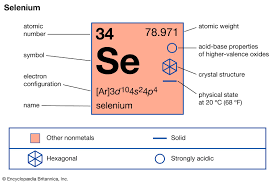Understanding MSDS: Your Guide to Chemical Safety Information
In any workplace that handles chemicals, safety is paramount. You’ve likely seen labels on chemical containers, but there’s a more comprehensive document that provides critical details about hazardous substances: the Material Safety Data Sheet (MSDS). The MSDS is a vital tool for ensuring the safe handling, storage, and emergency response related to chemicals, protecting workers, the environment, and the public.
What Exactly Is an MSDS?
An MSDS is a detailed document that provides comprehensive information about a hazardous chemical. It’s designed to give workers and emergency personnel the procedures for handling or working with a substance in a safe manner, and includes information such as physical data (melting point, boiling point, flash point, etc.), toxicity, health effects, first aid, reactivity, storage, disposal, protective equipment, and spill-handling procedures.
Think of an MSDS as a fact sheet for chemicals. It’s the primary means of communicating hazard information on containers and in the workplace.
Key Information Found in an MSDS
While the exact format might vary slightly depending on the region or regulatory body, most MSDS documents follow a standardized structure, typically containing 16 sections (though some older versions might have fewer). Here are the most critical sections:
1. Identification
This section identifies the chemical, recommended uses, and contact information for the manufacturer or distributor. It includes the product name, synonyms, and often a Chemical Abstract Service (CAS) number for unique identification.
2. Hazard(s) Identification
This is arguably one of the most important sections. It outlines the chemical’s hazards using standardized classifications. This includes:
- Hazard pictograms: Symbols that visually communicate specific risks (e.g., flammable, corrosive, toxic).
- Signal words: “Danger” (for more severe hazards) or “Warning” (for less severe hazards).
- Hazard statements: Phrases describing the nature of the hazard (e.g., “Highly flammable liquid and vapor,” “Causes severe skin burns and eye damage”).
- Precautionary statements: Advice on safe handling, storage, and emergency measures.
3. Composition/Information on Ingredients
This section lists the chemical ingredients of the product, including their concentrations, particularly if it’s a mixture. It also includes the CAS number and other unique identifiers for each ingredient.
4. First-Aid Measures
This critical section provides immediate care instructions in case of exposure to the chemical. It covers what to do if the chemical is inhaled, gets on skin or in eyes, or is ingested. This information is vital for emergency responders and colleagues.
5. Fire-Fighting Measures
Details on how to effectively extinguish a fire involving the chemical, including suitable extinguishing media (e.g., water spray, foam, CO2, dry chemical), specific hazards arising from the chemical (e.g., toxic fumes), and protective equipment for firefighters.
6. Accidental Release Measures
Instructions for containing and cleaning up spills or leaks safely. This includes personal precautions (e.g., wearing PPE), emergency procedures, and methods for containment and cleanup.
7. Handling and Storage
This section provides guidance on safe handling practices to minimize exposure and safe storage conditions to prevent accidents or degradation of the chemical. It covers incompatibilities and specific ventilation requirements.
8. Exposure Controls/Personal Protection
Crucial for worker safety, this section details:
- Exposure limits: Permissible Exposure Limits (PELs) or Threshold Limit Values (TLVs) for the chemical.
- Engineering controls: Recommendations for ventilation systems or enclosed processes.
- Personal Protective Equipment (PPE): Specific recommendations for gloves, eye protection, respiratory protection, and protective clothing required when handling the substance.
9. Physical and Chemical Properties
Describes the chemical’s appearance, odor, pH, melting point, boiling point, flash point, evaporation rate, flammability, vapor pressure, and other physical characteristics.
10. Stability and Reactivity
Information on the chemical’s stability under normal conditions and its potential for hazardous reactions with other substances or conditions (e.g., heat, moisture, incompatible materials).
11. Toxicological Information
Provides detailed information on the potential health effects of the chemical through various routes of exposure (inhalation, ingestion, skin/eye contact). It covers acute (short-term) and chronic (long-term) effects, including symptoms of exposure and target organs.
12. Ecological Information (Ecotoxicity)
Information on the environmental impact of the chemical, including its effects on aquatic life, soil, and plants, as well as its persistence and biodegradability.
13. Disposal Considerations
Guidance on safe and environmentally sound disposal methods for the chemical and contaminated packaging, in accordance with local, national, and international regulations.
14. Transport Information
Provides classification information for transporting the chemical safely, including UN number, proper shipping name, hazard class, and packing group, essential for shipping companies.
15. Regulatory Information
Lists specific safety, health, and environmental regulations applicable to the chemical in the region where it’s being used.
16. Other Information
Includes the date of preparation or last revision of the MSDS, and other relevant information not covered in previous sections.
The Evolution: From MSDS to SDS
It’s important to note that globally, many countries have transitioned from the term “MSDS” to Safety Data Sheet (SDS) to align with the Globally Harmonized System of Classification and Labelling of Chemicals (GHS). The GHS aims to standardize hazard communication elements, making chemical safety information more consistent and understandable worldwide. The 16-section format mentioned above is part of this GHS standardization. While the name has changed, the core purpose of providing vital safety information remains the same.
Who Needs to Use an MSDS?
- Workers: To understand the hazards of chemicals they work with and how to protect themselves.
- Employers: To fulfill their legal obligations for hazard communication and ensure a safe working environment.
- Emergency Responders: Firefighters, paramedics, and hazmat teams use MSDS for quick access to critical information during incidents.
- Healthcare Professionals: To understand the effects of exposure and provide appropriate medical treatment.
- Anyone handling, storing, or transporting chemicals.
Conclusion
The MSDS (or SDS) is more than just a document; it’s a cornerstone of chemical safety. By providing comprehensive, standardized information on hazardous substances, it empowers individuals to work safely, enables effective emergency response, and ultimately contributes to a healthier and safer workplace and environment. If you’re working with chemicals, understanding and utilizing these vital safety data sheets is not just good practice—it’s essential.




